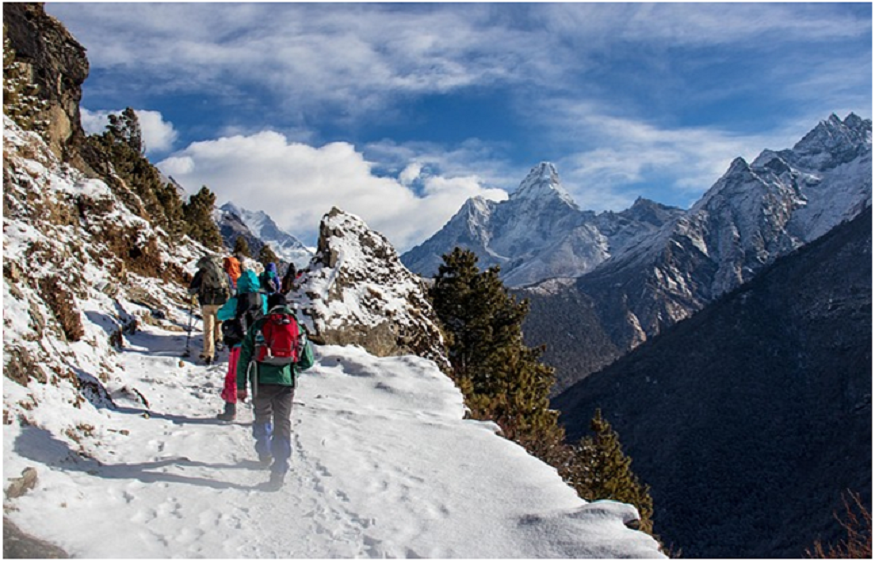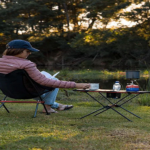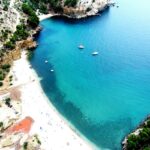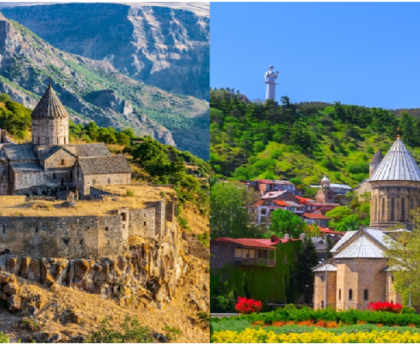The Himalayas are filled with legendary trekking trails, but few match the untouched beauty and cultural richness of the Manaslu region in Nepal. Tucked away in the remote western part of the country, the Manaslu Circuit Trek and the Manaslu Circuit with Tsum Valley Trek promise an experience that is as spiritual as it is scenic. Both treks take you around Mount Manaslu (8,163 m), the world’s eighth-highest peak, and through villages steeped in Tibetan culture.
Let’s explore both routes in depth—starting with separate overviews—before diving into what makes trekking in the Manaslu region truly unforgettable.
Manaslu Circuit Trekking –
Overview
The Manaslu Circuit Trekking is one of Nepal’s most spectacular high-altitude trails. Often compared to the Annapurna Circuit in terms of landscape and diversity, this trek is much less crowded. The route takes you from Arughat/Soti Khola in the lowlands to the high Himalayan pass of Larkya La (5,160 m). Along the way, you journey through subtropical forests, deep river gorges, terraced fields, and traditional Gurung and Tibetan-influenced villages.
It’s a moderately challenging trek that offers everything a seasoned adventurer dreams of—towering snow peaks, glacial valleys, ancient monasteries, and unparalleled solitude. With the right preparation, this trek is suitable for both experienced trekkers and fit beginners looking for a quieter alternative to Everest or Annapurna.
Manaslu Circuit with Tsum Valley Trek –
Overview
For those who want to delve even deeper into remote Himalayan culture, the Manaslu Circuit with Tsum Valley Trek is an extraordinary option. This trek includes all the highlights of the classic Manaslu Circuit, but adds a detour to the hidden Tsum Valley—a sacred Himalayan valley that remained closed to outsiders until 2008.
The Tsum Valley, known as the “Valley of Happiness,” is one of the last places on earth where Tibetan Buddhist culture thrives in its purest form. Villages like Chhokang Paro, Nile, and Mu Gompa offer not only dramatic Himalayan views but also spiritual immersion into ancient traditions, meditation caves, and prayer-flag-lined paths.
Expect fewer teahouses and a more rugged trail, but you’ll be rewarded with a deeper sense of connection—to the mountains and to the timeless culture that calls this region home.
Trekking Highlights
Both treks share the grandeur of the Manaslu region but each offers its own unique treasures:
Common Highlights (Both Treks)
- Breathtaking views of Mount Manaslu, Himalchuli, Ganesh Himal, and Shringi Himal.
- Cross the Larkya La Pass (5,160m)—one of the most dramatic passes in Nepal.
- Explore remote mountain villages such as Samagaon, Samdo, and Lho.
- Witness pristine alpine lakes, glaciers, and dramatic landscapes untouched by modernization.
- Diverse flora and fauna within the Manaslu Conservation Area.
Tsum Valley-Specific Highlights
- Discover the spiritual heartland of Tsum Valley with ancient monasteries like Mu Gompa and Rachen Gompa.
- Visit Milarepa’s Cave, where the great Tibetan saint meditated centuries ago.
- Immerse in authentic Tibetan culture—traditional attire, dialects, rituals, and festivals.
- Enjoy off-the-beaten-path trekking with few tourists and unspoiled nature.
Trek Itinerary Outline
Here’s a combined outline showing how the routes diverge and merge:
Manaslu Circuit Trek – Sample 16-Day Itinerary
- Day 1: Drive from Kathmandu to Soti Khola
- Day 2: Trek to Machha Khola
- Day 3: Trek to Jagat
- Day 4: Trek to Deng
- ay 5: Trek to Namrung
- Day 6: Trek to Lho
- Day 7: Trek to Samagaon
- Day 8: Acclimatization day (hike to Manaslu Base Camp or Pungyen Gompa)
- Day 9: Trek to Samdo
- Day 10: Trek to Dharamsala
- Day 11: Cross Larkya La Pass and descend to Bimthang
- Day 12: Trek to Tilije
- Day 13: Trek to Tal
- Day 14: Trek to Syange
- Day 15: Drive to Besisahar
- Day 16: Drive to Kathmandu
Manaslu Circuit with Tsum Valley – Sample 21-Day Itinerary
- Day 1–4: Same as above (Kathmandu to Chumling via Jagat)
- Day 5–9: Detour into Tsum Valley: trek to Chhokang Paro, Nile, Mu Gompa, explore monasteries, then return to Lokpa
- Day 10–21: Rejoin Manaslu Circuit: trek through Deng, Namrung, Samagaon, Larkya La Pass, and follow the same descent
Note: The Tsum Valley detour adds 5–6 days to the total trek.
Best Time to Go
The ideal seasons for both treks are:
- Spring (March to May): Wildflowers bloom, skies are clear, and weather is pleasant.
- Autumn (September to November): Crystal-clear mountain views and festive cultural atmosphere.
Winter (Dec–Feb) is extremely cold at high altitudes, and monsoon (June–August) brings landslides and leeches in the lower sections—generally not recommended.
Cultural Significance
The Manaslu region is a cultural melting pot where Hinduism transitions into Tibetan Buddhism. As you gain altitude, the landscape shifts not only physically but spiritually. Monasteries, mani walls, chortens, and spinning prayer wheels become common sights.
In Tsum Valley, the cultural atmosphere intensifies. This area was once part of Tibet and still maintains ancient Buddhist traditions, polyandry, and distinct dialects. It’s not just a trek—it’s a pilgrimage into a Himalayan sanctuary that feels frozen in time.
Required Permits
Because of its restricted status, both treks require special permits in addition to the regular conservation area fees:
Manaslu Circuit Trek Permits:
- Manaslu Restricted Area Permit (MRAP): USD 100 for first 7 days (Sept–Nov), USD 75 (Dec–Aug)
- Manaslu Conservation Area Permit (MCAP): NPR 3,000 (~USD 25)
- Annapurna Conservation Area Permit (ACAP): NPR 3,000 (~USD 25)
Additonal for Tsum Valley:
- Tsum Valley Restricted Area Permit: USD 40 for first 7 days (all seasons), USD 7 per day after
Note: Solo trekking is not allowed. You must go with a registered guide and at least one other foreign national or trek with an agency.
How to Prepare
Here are some essential tips:
- Fitness: Be prepared to hike 6–8 hours daily with steep ascents and descents.
- Gear: Bring warm clothing, sleeping bag (up to -20°C), trekking poles, first-aid kit, water purification, and headlamp.
- Altitude: Acclimatization days are built into the itinerary. Diamox is commonly used to prevent AMS.
- Accommodation: Teahouse trekking is available, though facilities in Tsum Valley are basic.
- Connectivity: Wi-Fi and charging are rare or expensive—go unplugged or bring a solar charger.
Why Choose These Treks?
Whether you’re drawn by Manaslu’s raw alpine beauty or the spiritual magnetism of Tsum Valley, these treks offer something unique:
- Less commercialized: Compared to Everest or Annapurna.
- Authentic encounters: Meet local people who live simply and in harmony with nature.
- Adventurous edge: Remote trails, suspension bridges, and high mountain passes.
- Cultural depth: Monasteries, Buddhist festivals, ancient practices.
Final Thoughts
The Manaslu Circuit Trek and Manaslu Circuit with Tsum Valley are journeys through a world that feels preserved from centuries past. You’ll find yourself walking under glacier-fed waterfalls, past Buddhist mani walls, and into villages where life moves at the pace of yaks and prayer wheels.
For the adventurous soul seeking raw beauty, spiritual connection, and cultural authenticity, there may be no better Himalayan experience.
Whether you walk the classic circuit or extend your journey to include the Tsum Valley, your steps will echo through the silent peaks and sacred valleys of Manaslu—a region that remains, truly, Nepal’s last great trekking frontier.
Booking Process by Adventure Great Himalaya Treks:
To book any of these treks tours through Adventure Great Himalaya A Trekking Agency in Nepal ,To discuss your preferred dates, group size, and specific needs. They will provide a detailed itinerary covering these trek’s duration, highlights, cost, and inclusions such as a guide, porter, meals, accommodation, and transportation.
Prior to the trek, you will receive a comprehensive pre-trek briefing with essential information on packing, fitness preparation, and altitude acclimatization. The agency will finalize all logistical arrangements, including transportation, accommodation, and permits, to ensure everything is in place for your trek. Upon arrival in Nepal, the team will ensure that all aspects of the trek are organized, providing you with a smooth and unforgettable experience on these treks.





